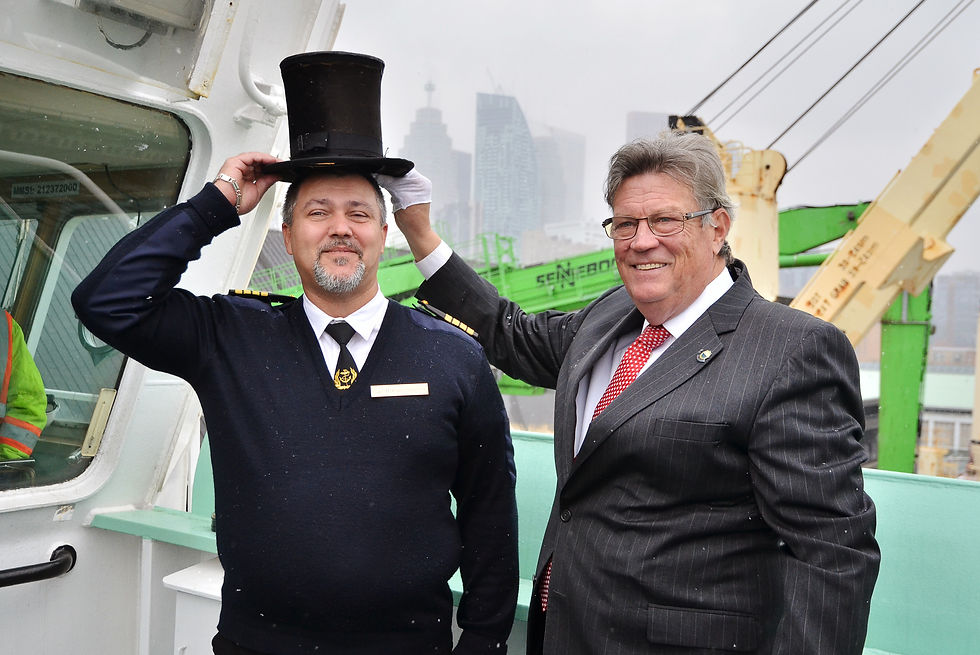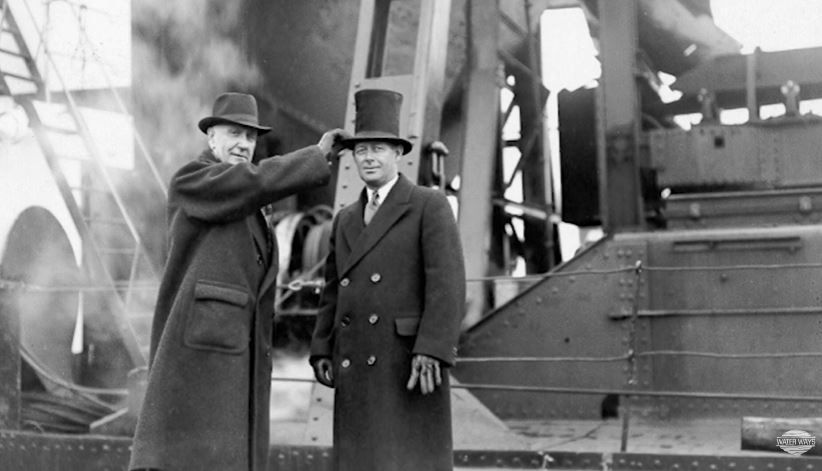Toronto’s Century-Old Maritime Tradition: The Beaver Hat Ceremony
- Steven Bull

- Nov 2, 2022
- 3 min read
By: Steven Bull, Host – Water Ways TV

Toronto is currently the fourth largest city in North America. It’s the land of Drake, endless construction and constant playoff disappointment. But it’s also a maritime city with a nautical tradition that’s older than Canada itself.
The capital of Ontario was originally known as York and its location was strategically chosen due to the natural harbour. Up until 1858, there were no Toronto Islands. It was a peninsula connected to the mainland with the Western Gap – the entrance to the harbour by what’s now Billy Bishop Island Airport – as the only entrance.
The inner harbour was sheltered from Lake Ontario and the massive waves and storms that can kick up. In 1858, one such storm was so vicious it tore through the peninsula and a new channel flooded through, thus creating the islands. It was later dredged and widened and is now the primary access point for large ships. It's known as the Eastern Gap.
Today, the bulk of traffic in the harbour is recreational. A staggering mix of private boats, tour boats, water taxis, rental boats, kayaks, canoes, SUPs and the city’s island ferries. It can be overwhelming at the height of summer in terms of the number of vessels. That being said, it’s still a working port, and freighters and cruise ships, while fewer in number, regularly visit.
There is a relatively new terminal at the mouth of the Eastern Gap which welcomed a record number of cruise ships in 2022, but cargo is the key to this port.
The shipping season is still underway but for 2021 Ports Toronto reported more than 2.2 million metric tonnes of cargo arrived.

Many assume sugar is the primary cargo arriving as the Redpath Sugar refinery on Queens Quay, just east of Yonge Street, is the most prominent. And while sugar is one of the largest shipments - with 572,683 metric tonnes arriving in 2021 – it was third in terms of tonnage behind salt and cement.
The sugar ships generally come in very early spring and are often the first ship to arrive each calendar year. They bring raw sugar up from Central and South America, through the St. Lawrence Seaway, and into Lake Ontario.
Today we use trains, planes, and trucks to help move goods, but back in the mid-1800s ships were the primary source of economic transportation. Because of the seasons in Canada, after a long, cold winter supplies were often running low before spring. So, to encourage captains to race to the city as soon as possible, the Port of Toronto’s first Harbour Master, Hugh Richardson came up with the Beaver Hat Ceremony.
Back then, beaver-pelt to hats were all the rage, so Richardson acquired one and announced that the captain of the first ship to arrive in port would get to wear the hat – which became a de facto key to the city - for 24 hours.
To this day, the same prize is awarded. Though, because the hat is older than Canada, they don’t let the captain wear it into town. In fact, that practice stopped years ago because of some misadventures. Harbour Master Emeritus Angus Armstrong told me at the 2019 ceremony that over the years it had been filled with beer, kicked down the street, and caught up in barfights and scuffles.
Today, the hat is awarded to the first ocean-going vessel – known as a “saltie” – to arrive in Toronto. A Ports Toronto official boards the boat and, just like would have happened in 1861, the captain is welcomed to the city, presented with a cash award, and the hat makes a brief appearance. These days the hat is handled with white gloves and doesn’t actually get placed on the captain’s head, so its held just above, but the gesture remains. It's a great Canadian tradition that dates back to 1861, which is roughly the last time the Toronto Maple Leafs won a playoff round. Here's how it all came to be:


















Comments